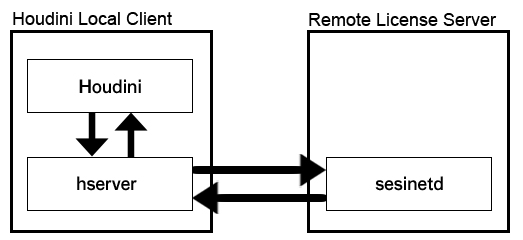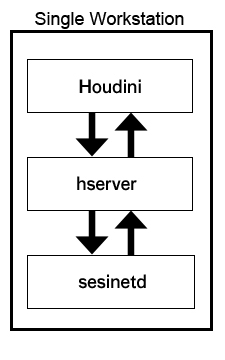How does Houdini licensing work?
The license management system is based on a client/server model with a license server running on one server and the applications running on one or more clients. Unless the licenses are workstation licenses, the server and client are different machines on a private network. With workstation licenses, license server software and client application are installed together on the same machine.
The license server (sesinetd) keeps track of the licenses and their activity (whether they are checked out or available for use). When a Houdini product needs a license, it communicates with hserver, which is a helper program running on the client that caches which licenses are checked out by that client machine. Hserver communicates with the license server (sesinetd). It is the license server (sesinetd) that grants licenses to valid clients and collects licenses when Houdini applications terminate. If there is no hserver running on the client, Houdini will not start. On Linux and Mac OSX, hserver is started automatically when you start a Houdini application, or it can be started manually. On Windows, both hserver and the sesinetd are started as Services named HoudiniServer and HoudiniLicenseServer respectively.
Licensing diagram for a local client and a remote license server (network license):

Licensing diagram for a server and client on the same machine (workstation license):
